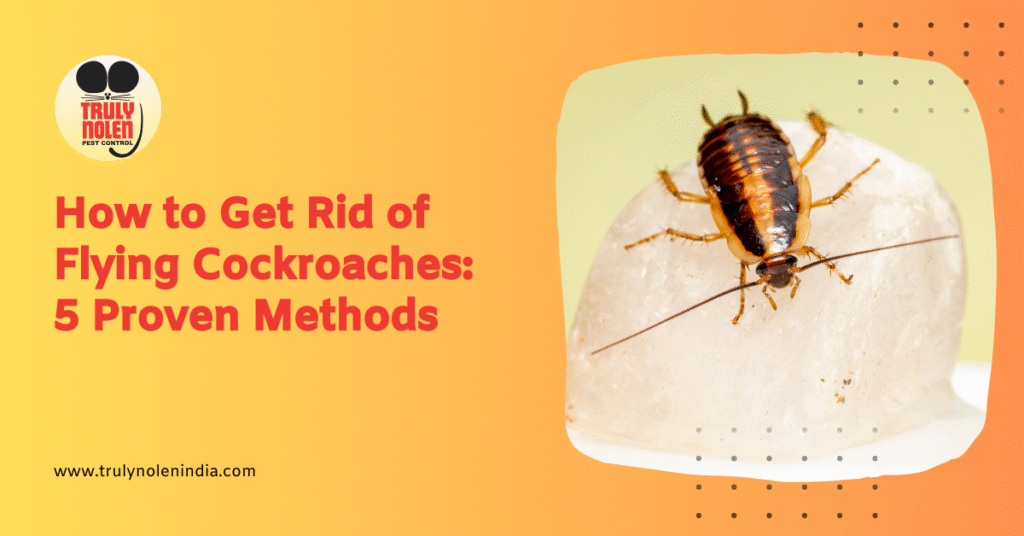
Flying cockroaches, also known as “winged roaches,” can be a nightmare for homeowners. These resilient insects are not only unsightly but can also carry diseases and contaminate food sources. Their ability to fly adds another layer of difficulty to controlling infestations. This article will provide you with comprehensive strategies to identify and eliminate flying cockroaches from your home, empowering you to reclaim your space from these unwelcome guests.
This article will delve into the characteristics of flying cockroaches, explore effective extermination methods, discuss targeted insecticides and traps, and outline preventative measures to keep these pests at bay. By following the guidance provided, you can effectively combat flying cockroach infestations and create a clean and healthy living environment.
Identifying Flying Cockroaches
The first step in eliminating any pest is proper identification. While all cockroaches share some common traits, flying roaches have distinct features that set them apart. Adult flying cockroaches typically range in size from 1 to 2 inches long and possess two pairs of wings. The forewings are leathery and serve as protective covers for the membranous hindwings used for flight. Their bodies are generally brown or reddish-brown, with some species exhibiting darker coloration.
One key characteristic that distinguishes flying cockroaches is their ability to take flight. They often fly in short bursts, especially when disturbed or seeking shelter. Their wings allow them to navigate quickly and evade capture, making them more challenging to control than ground-dwelling roaches.
When inspecting your home for flying cockroaches, pay attention to areas where they are likely to congregate, such as dark corners, under appliances, near food sources, and in bathrooms. Look for droppings, shed skins, or egg cases, which can indicate an active infestation.
Effective Extermination Strategies
Eliminating flying cockroaches requires a multi-pronged approach that combines targeted insecticides, effective traps, and preventative measures.
A comprehensive extermination strategy should address both the adult population and potential breeding sites. This involves identifying and eliminating cockroach harborage areas, such as cracks in walls, gaps around pipes, and cluttered spaces. Regular cleaning and sanitation practices are crucial to reducing food sources and creating an environment less hospitable to cockroaches.
Targeted Insecticides for Flying Roaches
Insecticides can be effective tools for controlling flying cockroach populations. However, it’s essential to choose products specifically labeled for use against roaches and follow the manufacturer’s instructions carefully.
How to kill flying roaches with insecticides involves applying them directly to areas where cockroaches are active or likely to travel. This may include spraying cracks and crevices, treating baseboards, and applying insecticide dust in harborage areas. Remember to wear protective gear, such as gloves and a mask, when handling insecticides.
Roach Traps and Monitoring Devices
Roach traps can be an effective way to monitor cockroach activity and capture individuals. There are various types of traps available, including sticky traps, bait stations, and electronic traps.
Sticky traps are simple to use and provide a visual indication of infestation levels. Bait stations contain insecticide-laced baits that attract and kill cockroaches. Electronic traps use ultraviolet light or other attractants to lure roaches into a killing chamber. Regularly checking and replacing traps is essential for maintaining their effectiveness.
Preventative Measures Against Flying Cockroaches
Preventing flying cockroach infestations is always preferable to dealing with an established problem. Implementing preventative measures can significantly reduce the risk of these pests entering your home.
Seal any cracks or gaps in your foundation, walls, and around windows and doors. Repair leaky pipes and faucets promptly, as cockroaches are attracted to moisture. Keep food stored in airtight containers and clean up spills immediately. Regularly vacuum and mop floors to remove crumbs and debris.
Conclusion
Eliminating flying cockroaches requires a combination of identification, targeted extermination strategies, and preventative measures. By understanding their habits, employing effective insecticides, utilizing traps, and implementing preventative practices, you can effectively control and eliminate these winged invaders from your home. Remember to consult with a pest control professional if you are facing a severe infestation or require assistance in developing a comprehensive extermination plan.
